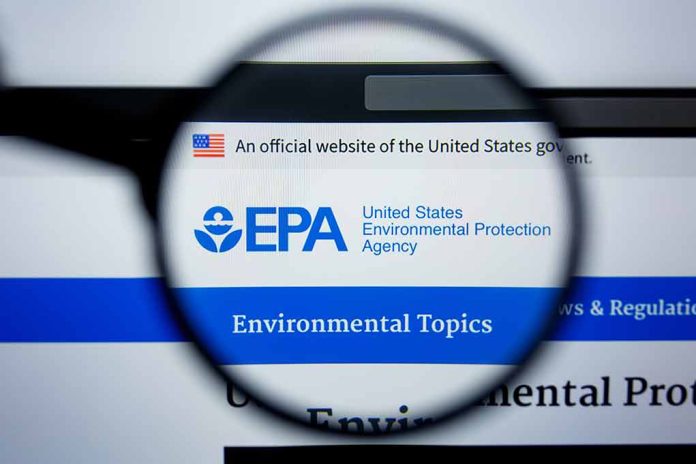
The EPA’s restructuring could reshape environmental justice efforts, prompting questions about the future of pollution control in marginalized communities.
Key Takeaways
- The Trump administration plans a 65% reduction in the EPA’s workforce and activities, impacting environmental regulations.
- The EPA has recently initiated the termination of approximately 280 employees involved in environmental justice and DEI programs.
- Critics argue that such cuts undermine efforts to address pollution in low-income and minority neighborhoods.
- EPA Administrator Lee Zeldin has defended the cancellation of environmental justice grants citing inefficiencies.
- Judicial and congressional oversight may act as checks against the significant reduction of the EPA.
Impact of EPA’s Workforce Reduction
The recent restructuring within the Environmental Protection Agency involves significant workforce changes. This aligns with a broader government initiative to overhaul federal bureaucracy. Affected individuals include 280 employees tied to environmental justice and diversity, equity, and inclusion programs, while 175 others have been reassigned. These measures aim to align with directives outlined in Executive Orders focused on empowering American workers and taxpayers.
The reduction in staff directly affects the Office of Environmental Justice and related divisions. According to a memorandum obtained by NBC News, these changes will take effect on July 31, with formal notice given 30 days prior. The current administration also intends to reverse many of the Biden-era policies, including the rollback of key environmental regulations and initiatives.
Arguments Defending Restructuring
Zeldin has publicly defended the termination of environmental justice grants, prioritizing expenditures directly addressing environmental improvements. A notable example being the $50 million grant for Climate Justice Alliance that was rescinded as it reportedly failed to address immediate environmental issues. However, critics argue these programs play crucial roles in tackling pollution challenges in underserved communities.
“I would argue that if you’re going to spend $50 million in the name of environmental justice, instead of spending $50 million on Climate Justice Alliance, the $50 million should get spent actually remediating environmental issues.” argued Zeldin.
Detractors express concern that the restructuring may further exacerbate pollution issues, especially in low-income neighborhoods disproportionately impacted by environmental hazards. Meanwhile, the closure of the National Environmental Museum, deemed ideologically slanted, reflects the administration’s intent to curb perceived inefficiencies within the agency.
EPA starts layoffs of environmental justice employees https://t.co/pgwsfIXEao pic.twitter.com/3nVi8HEuJv
— The Last Word (@TheLastWord) April 22, 2025
Potential Oversight and Public Opinion
Despite drastic staffing cuts, the EPA’s actions are subject to legislative and judicial checks. The existence of the agency, heavily justified by numerous federal statutes, provides a layer of protection against complete elimination or significant reduction without congressional oversight. Nonetheless, the administration’s approach reflects a strategic move to streamline the agency while facing public and industrial scrutiny.
The EPA’s role in safeguarding public health and environmental quality enjoys favorable public opinion, despite criticisms from segments opposing increased regulation. This restructuring emphasizes a pivotal moment in balancing regulatory needs against administrative efficiency, especially concerning marginalized demographic representation in pollution efforts.
Sources:
- EPA workforce cuts mean major changes to environmental regulations
- EPA’s ‘environmental justice’ employees face layoffs this summer
- EPA fires, reassigns 455 environmental justice staffers
- EPA starts layoffs of environmental justice employees







